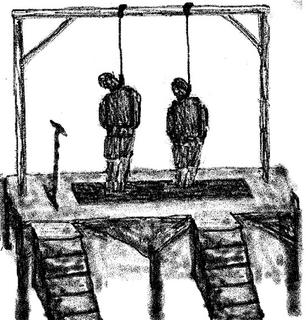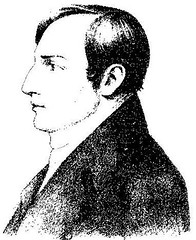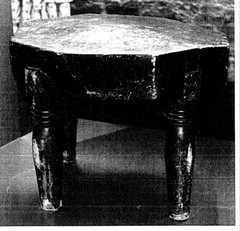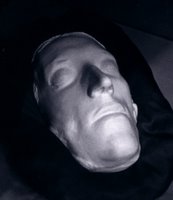CRIME AND CAPITAL PUNISHMENT IN DUBLIN CITYBetween 199 and 244 were hanged in Dublin between 1780 and 1795
- a rate of approx 12 to 15 a year.
In 1785 alone, there were 33 hangings.
The City's population was 180,000 then and is as many as 1,470,000 now: 8 times as many.
Based on the population ratios this would suggest that in modern Dublin city one could suggest that at per year, approximately 120 people would be executed every year.
SITES OF EXECUTION: City: Stephen’s Green, and Newgate Prison;
County: Gallows hill, Kilmainham commons (near grand canal bridge).
In the 18th century, most hangings in the city took place in St. Stephen’s Green, though there were a number of local gallows around the city and county which were also used.
HANGINGS IN STEPHEN’S GREEN:Hangings in Stephen’s Green generally comprised of a procession in a cart to the hanging tree. The friends and families of the condemned would run alongside the carriage and the rope from the hanging tree would be attached to their neck while still in the carriage. Then the carriage would be driven away and the person would be left dangling from the tree.
This practice ceased to be used in January 1783 when hangings were relocated Newgate prison on Green Street, and Gallows hill here in Kilmainham.
VIOLENCE AND CRIME IN DUBLIN CITY:Between 1780 and 1795 there were 390 homocides reported in Dublin city
and county – An average of 24 deaths per year:
189 murders
82 Suicides
34 manslaughter
34 infanticides
9 dueling deaths
42 unknown or other cause.
Of these 308 homicides for which the victim was not the culprit aswell,
only 17 were considered solved
and 27 people were hanged as a result (4 of them women, one of them a priest)
Other crimes: 3,600 robberies and burglaries.
53 rapes (7 resulting in death)
2 people were hanged for rape in this period, one a man and one a woman. The woman was hanged for the rape of a 10-year-old girl.
337 Assaults
158 riots
22 forcible enlistments
PUNISHMENTS REFLECTED THE VIOLENCE OF THE TIME· prison,
· transportation
· whippings,
· pillories
· branding
· hanging
· strangulation and burning to death at the stake (for women)
o Also note acts of vigilantism: such as ‘ducking’
EXAMPLES OF WHIPPING In May 1787 George Dalton was whpped from Kilmainham to Mount Brown for 'secreting himself in the shop of Laurence Hynes'.
Another interesting one was Ann Codd who was found guilty of stealing a child's clothes and was, with seeming appropriateness, stripped and whipped from the chapel in St. Sepulchre to Back Lane.
HANGING AND THE DROP PLATFORM:Despite the fact that the hanging drop platform or trap door in hangings are associated with the developments in the Victorian period, it was introduced to Dublin (and likely it was its first use in the whole country) here at Gallows hill, in January 1783,
(it having been first used at Tyburn in 1760 to hang a peer of the house of Lords named Lawrence Shirley the Fourth Earl of Ferrers for murder) and shortly after at Newgate Prison .
It was intended to break the necks of prisoners but it seems it failed as often as it worked.
As I will explain later, this would have been down to the noose and the length of drop used
SUSPENSION HANGING:Patrick LynchJust two weeks prior to the hanging platform being introduced to Ireland, here at Gallows hill, another alternative to the older St. Stephen’s Green system of hanging from a tree experimented with at Newgate.
Patrick Lynch was hanged on the 4th of January 1783 at Newgate with an experimental hoist system which was to be used for the first and last time on that occasion.
The noose was placed around his neck on the steps of the prison at ground level with the rope attached to a mechanical apparatus on the first level.
He was then hoisted high into the air and the body swung from 12.00pm until 4.00pm.
Thousands crowded in to see this spectacle and many adjoining streets remained impassable all day.
The hanging attracted wide criticism, and it seems that quite apart from the failure of the system to break the prisoner’s neck and the slow death that resulted, the height of the prisoner above the street and the fact that the body was up there for 4 hours made it particularly unpalatable.
(He was convicted under the ‘Chalking Act’ of 1778, when he shot a man he was robbing in the face. Under this legislation, the body of a person who killed or maimed with intent to do so would be given to the surgeons for dissection or anatomization.)
Then on Saturday the 18th of January on 1783 a triple hanging for burglary was performed on Gallows Hill demonstrating the drop platform and the prisoners were said to have died “much easier” than Lynch did.
As a result a similar system with an iron platform was installed in Newgate in March.
5 months after the introduction of this platform, the youngest prisoner believed to be hanged in this period in Dublin was executed at the age of 14. He was a very slight boy convicted of robbery named John Short.
KILMAINHAM'S "GALLOWS HILL" EXECUTIONS:  108 executed: between January 1783 and April 1795
108 executed: between January 1783 and April 1795· 93 Property Offences
(theft, burglary, robbery, 4 women)
· 9 Murders
(under the Murder Act of 1752, the sentence was carried out within 48 hours of the verdict and the body would be dissected)
· 1 Assault
· 1 Arson
(Mary Purfield, 1783, burned instead of hanged)
· 4 unkown.
· 108 total
One woman in 1783 who was found guilty of arson was burned at the stake at Gallows hill. Another woman was burned at a stake for murder in St. Stephen’s Green the following year.
HANGING AND QUARTERINGNicholas Fagan was hanged and quartered for murder on January 14th 1786
(this was common, as was beheading, and public dissection for murderers was obligatory by act of parliament, 1752)
GIBBETINGRobert Jameson was hanged and gibbeted on March 14th 1786.
Gibbeting was a process which dated back to the 14th century whereby the body of the hanged the prisoner would be
stripped, dipped into molten pitch or tar and when it had cooled, placed into an iron cage that surrounded the head, torso and upper legs.
The cage was riveted together and then suspended. In this case it was on a tall wooden beam.
The intention was to leave the body as a grim reminder of the punishment for such a crime. It could stay on the gibbet for a year or so until it rotted away or was eaten by birds etc
Someone chopped down Jameson's gibbet a week later and a gaoler of the old Kilmainham Jail, re-erected it. Then 2 weeks later it was again chopped down,
the beam was thrown in the Liffey, the irons removed from the body and it was buried in a shallow grave somewhere here on Gallows hill.
1834. Hanging in chains or gibbet irons after death was finally abolished after James Cook was hanged and gibbeted for murder.
OLDEST EXECUTEDThe oldest individual to be hanged at Gallows HIll was 80 year-old Peter Rigney, executed 25th of January 1785 for stealing the fat of some sheep in Ballynadrun.
The sheep were alive at the time.
INNOCENT EXECUTED:March 20th 1784, Hugh Feeney and John Murphy, who both protested their innocence, were hanged at Gallows Hill for burglary just minutes before news that they had been granted a reprieve by the Lord Lieutenant as evidence suggesting their innocence had come to light.
The pair were immediately cut down but all efforts to revive them failed.
Four months later on July 24th, 1784, 3 men were hanged for a robbery having
“in the most solemn manner declared their innocence” prior to their executions.
Just over a year later a gang who were to be hanged for another burglary admitted that they were responsible for that crime.
Under an almost identical set of circumstances, it transpired that 3 men hanged in January of 1785 were also innocent.
Interestingly, those who admitted to being the real culprits were part of an exceptional quintuple hanging and what happened when the executioner pulled the lever was by Walker's Hibernian Magazine in June 1785, said to be…
"...distressing to every person capable of feeling for the misfortune of their fellow creatures. In about a minute after the 5 unhappy criminals were turned off, the temporary gallows fell down, and on its re-erection, it was found necessary to suffer three of the unhappy wretches to remain half strangled on the ground until the other two underwent the sentence of law, when they in turn were tied up and executed."
SURVIVING THE GALLOWS.There are several recorded instances of revival in this Country during the seventeenth and eighteenth centuries. One of the most famous is that of John Smith, hanged at Tyburn on Christmas Eve 1705. Having been turned off the back of the cart, he dangled for fifteen minutes until the crowd began to shout "reprieve" whereupon he was cut down and taken to a nearby house where he soon recovered.
He was asked what it had felt like to be hanged and this is what he told his rescuers:
"When I was turned off I was, for some time, sensible of very great pain occasioned by the weight of my body and felt my spirits in strange commotion, violently pressing upwards. Having forced their way to my head I saw a great blaze or glaring light that seemed to go out of my eyes in a flash and then I lost all sense of pain. After I was cut down, I began to come to myself and the blood and spirits forcing themselves into their former channels put me by a prickling or shooting into such intolerable pain that I could have wished those hanged who had cut me down."
16 year old William Duell was hanged, along with four others, at Tyburn on the 24th of November 1740. He had been convicted of raping and murdering Sarah Griffin and was therefore to be anatomised after execution. He was taken to Surgeon’s Hall, where it was noticed that he was showing signs of life. He was revived and returned to Newgate later that day. The authorities decided to reprieve him and his sentence was commuted to transportation.
An Iranian man identified only as Niazali, was hanged in February 1996 for 20 minutes, but survived after the victim's relatives pardoned him.
He told the Iranian daily newspaper "Kayhan" what it had felt like.
"That first second lasted like a thousand years. I felt my arms and legs jerking out of control. Up on the gallows in the dark, I was trying to fill my lungs with air, but they were crumpled up like plastic bags,"
OPINIONS ON ALTERNATIVES TO HANGINGFreemans Journal of October 1787 reports:"Wilde who was hanged yesterday at Kilmainham for stopping and molesting Mr. Gunning with intent to rob him, made at the place of execution ample confession of the many enormities he had committed and declared that if the blunderbuss had gone off he would certainly have shot the person he attacked.
"When cut down a number of fellows laid hold of the body and carried it without a coffin or any other covering along the Circular Road where they several times attempted to restore him to life by rubbing his limbs and trying every other method of sagacity could suggest.
"If the police persist in their exertions, there is not a doubt but the roads leading to this city will soon be cleared of the number of villains who for some time infested them and committed their depradations on the public."
Letter of October 1781 to the Hibernian JournalWill frequent executions contribute to their purpose? Experience shows the contrary. Their Frequency renders them familiar; and the mob seems no more affected with this solemn scene, than a puppet show.
A terror is lessened. Villainy increase, and necessity for execution is augmented by their multiplicity…
I am serious in proposing castration for the men whenever they commit a crime…
Intemperate lust is the most frequent cause of such crimes, and what more adequate a punishment? ‘Tis an operation not without a suitable degree of pain, sometimes danger, and perhaps the New Gaol would tremble more at the approach of such an execution… The body relishes pleasure and enjoyment, and is the only object of their concern. The soul – they know nothing of it…
Should a Capital C be marked on each cheek, their contemptible infamous Punishment would be known to every one they meet.
“A Magistrate”
Letter to Hibernian Journal in June 1787:[I]f in this age means could be devised by trying experiments upon our fellow creatures, who are become so hostile to society, as to be made by the laws of their country shocking examples of public justice; by amputating the limb of one man, and replacing it with the limb amputated from another; as the unhappy creatures are dead in law, good may result from evil, by the legislative tolerating to make experiments upon them, with a promise of a free pardon… I am sure men and women of the same description in Ireland, would be better pleased to be given while alive for surgical improvements, the law concurring and granting a pardon should the experiment succeed.. I will suppose government favouring the experiment, two operators with their assistants and apparatus apply the tourniquets upon the left or right thighs of two men or women, or a man and a woman if their limbs are proportioned, they are with two long bladed catlings to plunge the points seven inches below the parts, the limbs are to be taken off in oblique directions, upwards, forwards, downwards, until the points penetrate the bones, they are to revolve the points round the skin, bringing the heels, the parts, the point, first entered making neat circular flaps converging from the edges round the bones, the points the catlings revolved,; they are with small pliers to draw the mouths of the crural arteries together, giving the pliers to their assistants, while they unite them by the glovers suture, uniting the rest of the great blood vessels in a similar manner… the patients [convicts] will be thrown into violent convulsions,; but these should not prevent them [surgeons] from persisting in the experiment… The bones and muscles not uniting, the nerves and veins not inosculating, the flaps growing flabby and mortifying, and discharging a foetid ichor absorbing in the mass, contaminating the blood and juices, the patients growing hectic and convulsed, under these melancholy circumstances, it will be a pleasing reflection to them, that their lives are prolonged for offering up prayers to the Almighty Redeemer, that their mal-practice are expiated for transgressing the law; and that by fervent in spirit, they may expect eternal salvation. Although many lives may be lost in the attainment, they will be more than sufficiently compensated by the high advantage resulting to our fleets and armies.
Signed, “Heister.”
The last hanging at Gallows Hill prior to the construction of the New Kilmainham Gaol was a double hanging of two brothers named Connolly who were convicted of stealing a cow.










